Namche Bazaar
I could feel the altitude pressing down on my chest. Every breath came shorter, harder, as if the air had thinned into something half-imagined. Slow and steady, one step at a time, we pushed on until, finally, at 4 p.m., we reached Namché.

“In every walk with nature, one receives far more than he seeks.” – John Muir
The very next day, we were up at 6 in the morning, the chill of the thin mountain air sneaking in through the teahouse windows as we tucked into a hearty breakfast. Our duffels were already packed and lined neatly in front of our bedroom doors, waiting for the porters, who had set off hours earlier. By 7, we stood in front of the teahouse in the soft morning light, waiting for the rest of the group to gather. There was a quiet excitement in the air — the kind you feel before the start of something big. While we waited, we laughed and snapped a few group photos, the backdrop of prayer flags and distant snow-capped peaks making the moment feel almost unreal.
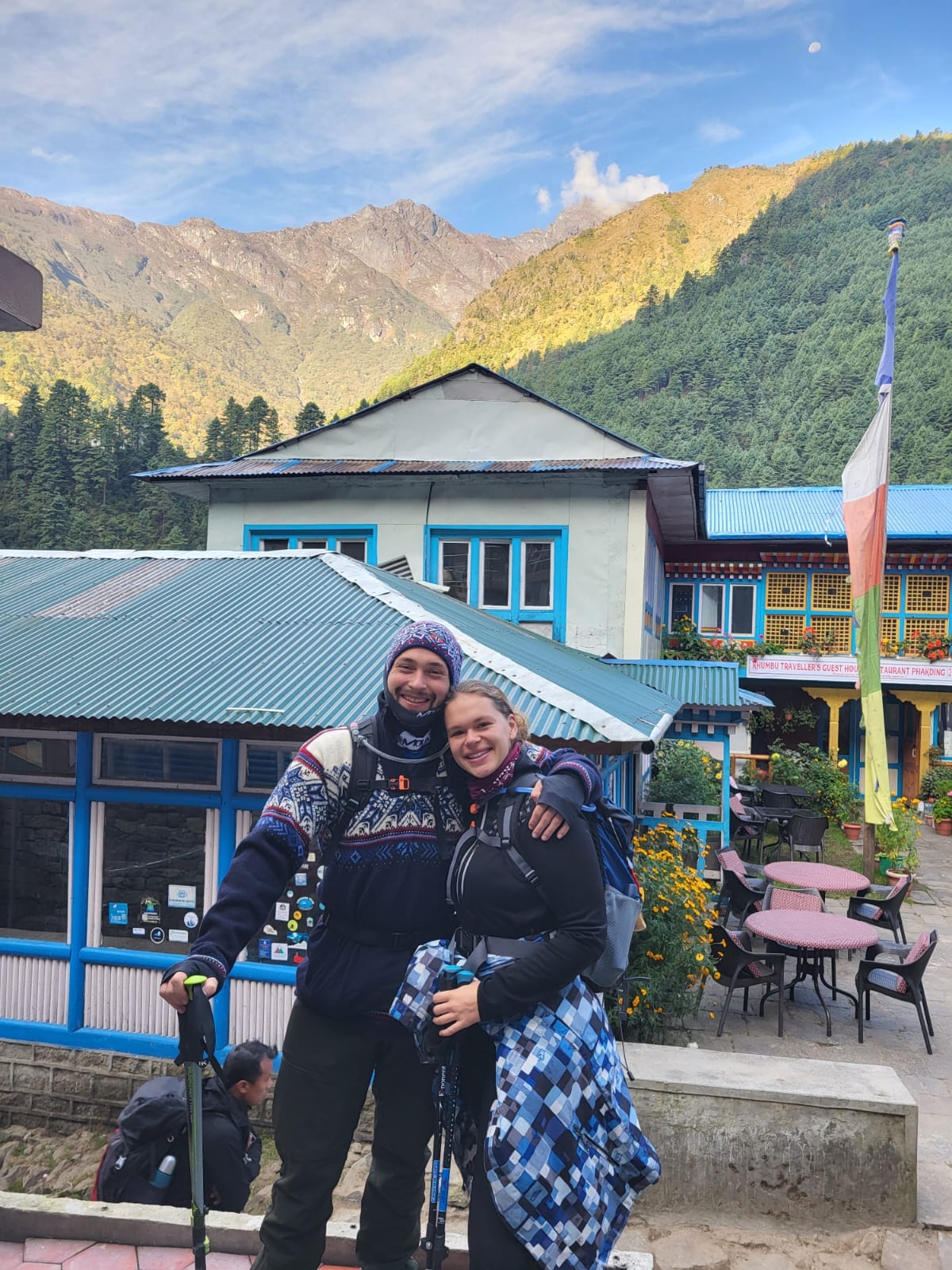
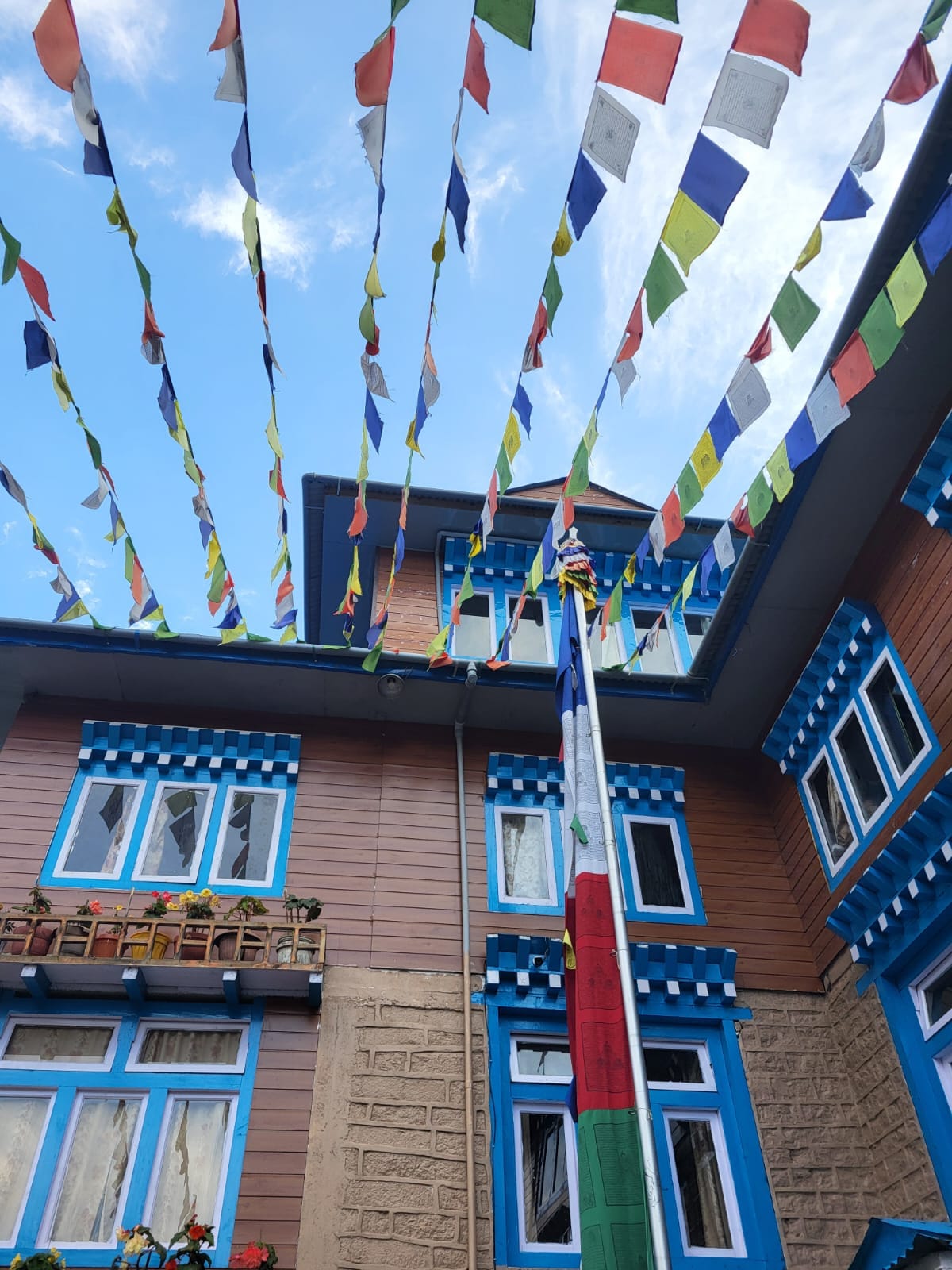
We began hiking in the crisp air, our breath visible with every step, following the steady rhythm of the river that wound alongside us. The trail opened up to scenes straight from a dream: wild deer grazing delicately by the water, their movements calm and unbothered. The river shimmered with a pale, milky hue, and our guide told us it was called the “Milk River” in Nepali — its color born from the glaciers melting far above.
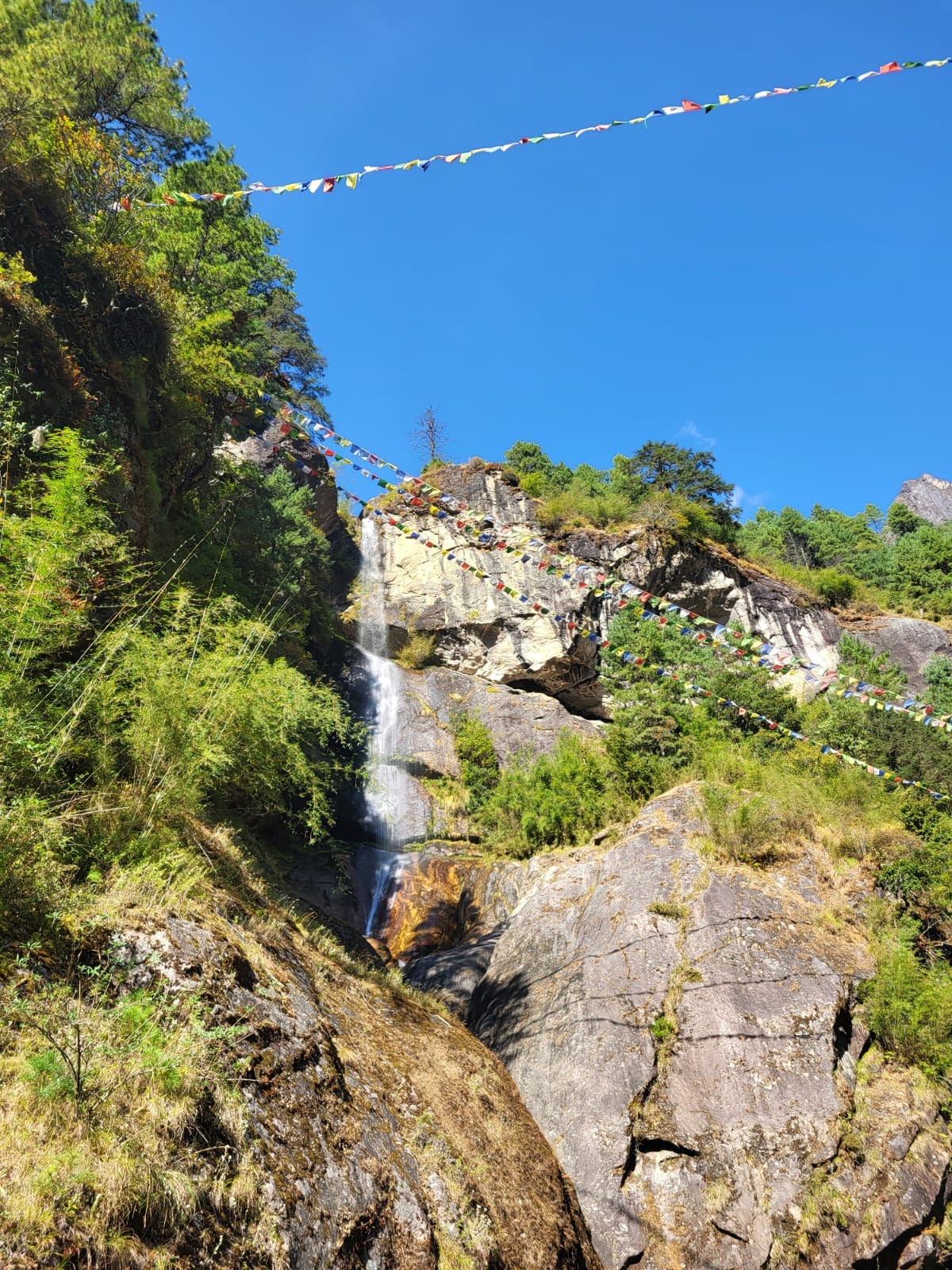
Crossing the river again and again over suspension bridges, we felt the sway of the planks beneath our boots, our hearts caught between nervousness and awe. About an hour in, our steady rhythm was broken. Alfred realized he had lost his wallet. His face immediately tensed, worry lines deepening with each passing minute. Sherpa Dahn sprinted back toward the teahouse to look for it, only to return empty-handed. We were all worried for him. Bibek quickly phoned the porters ahead, asking them to stop. Alfred would only know for sure once he reached his duffel bag.
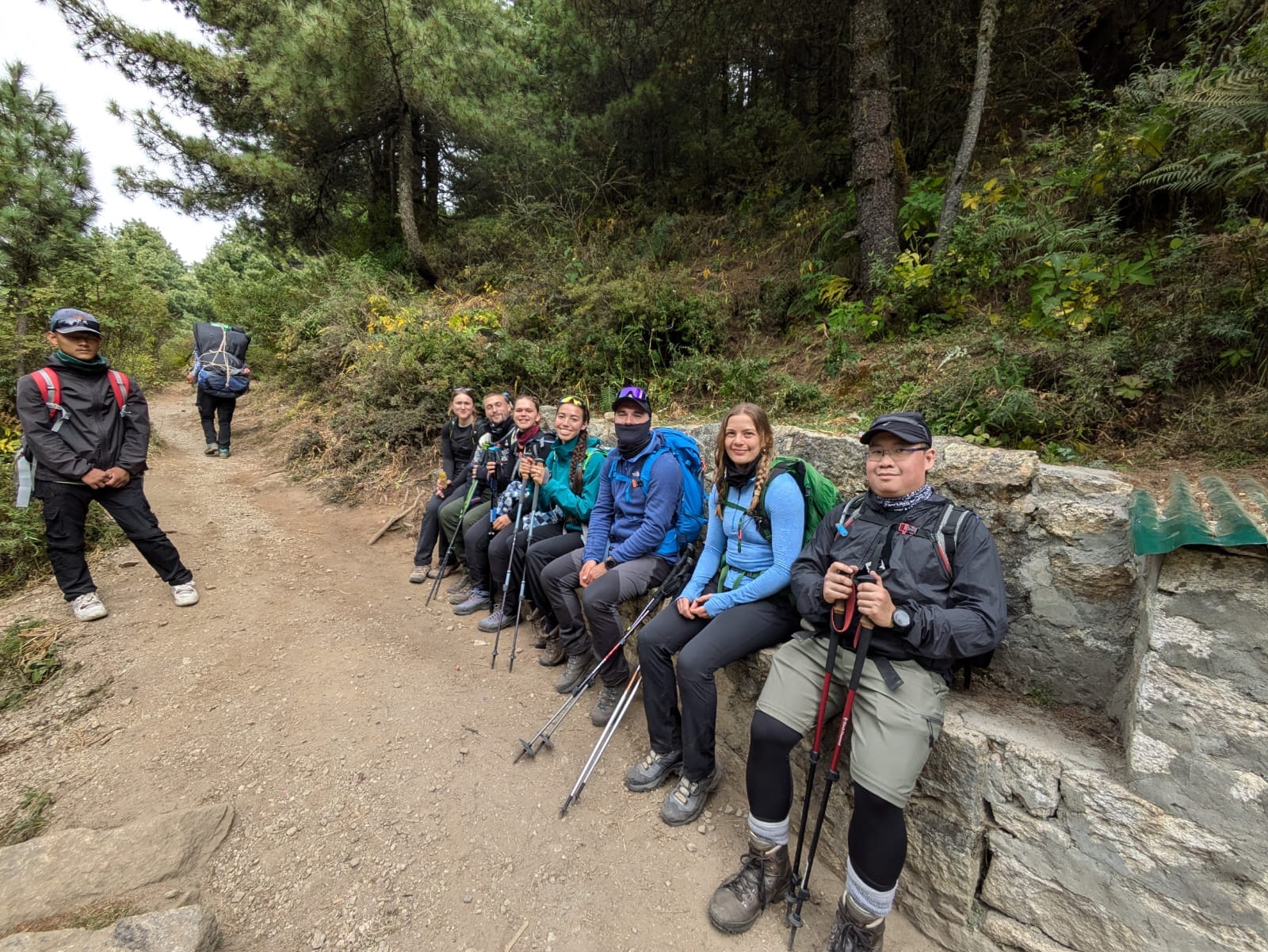
We picked up the pace as waterfalls tumbled beside us and tiny villages appeared like hidden gems tucked into the mountainside. An hour later, we caught up to the porters. Alfred dug into his duffel, and there it was. His wallet. The relief that swept over him was contagious. Then and there, we decided to have a tea break to celebrate the finding of Alfred's wallet. Our first tea break. Sitting together with steaming cups of ginger-honey-lemon tea, warming our hands, we realized we had stumbled into a new tradition. From then on, teatime became a ritual. All sharing a can of hot ginger-honey-lemon tea.
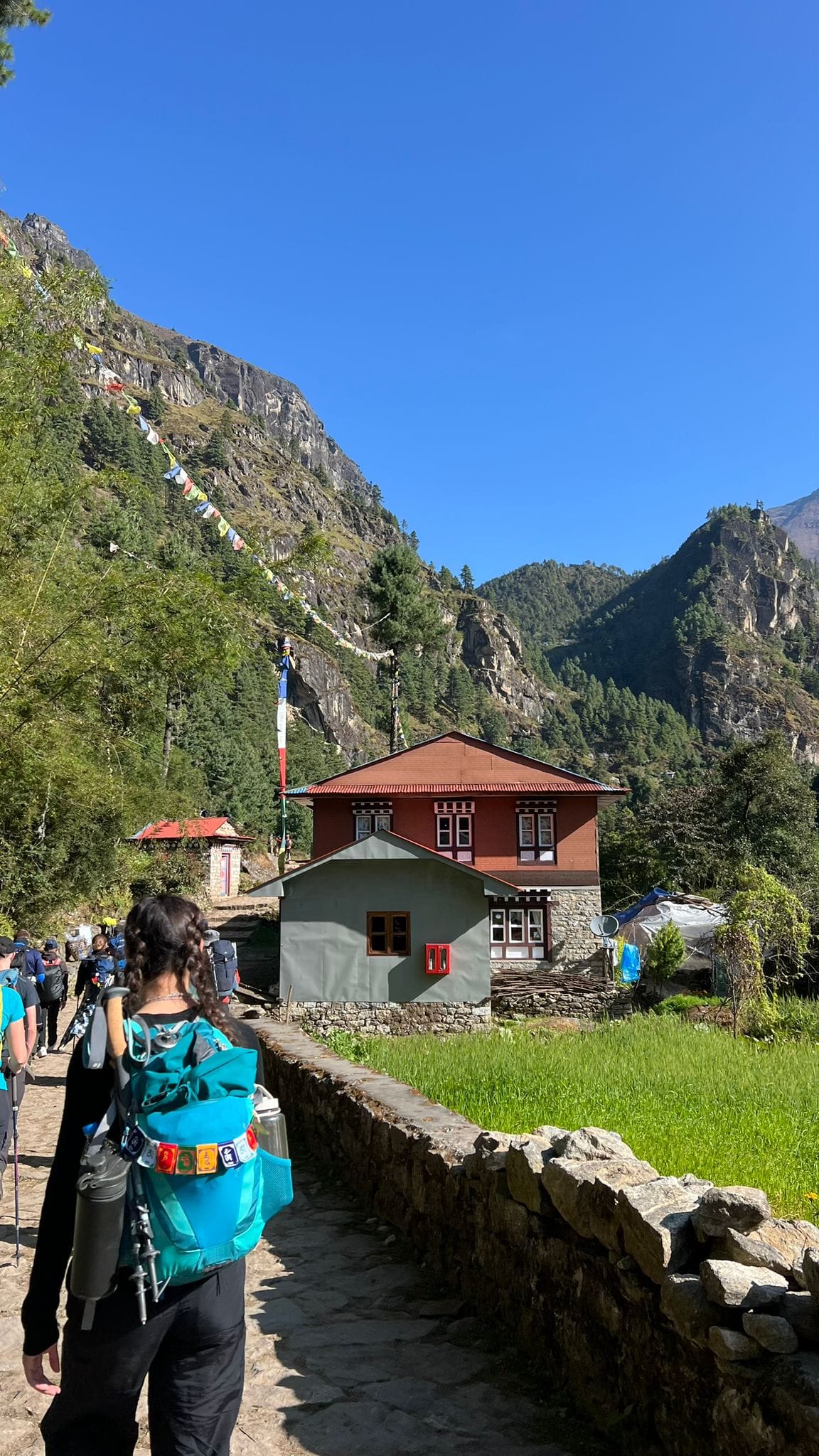
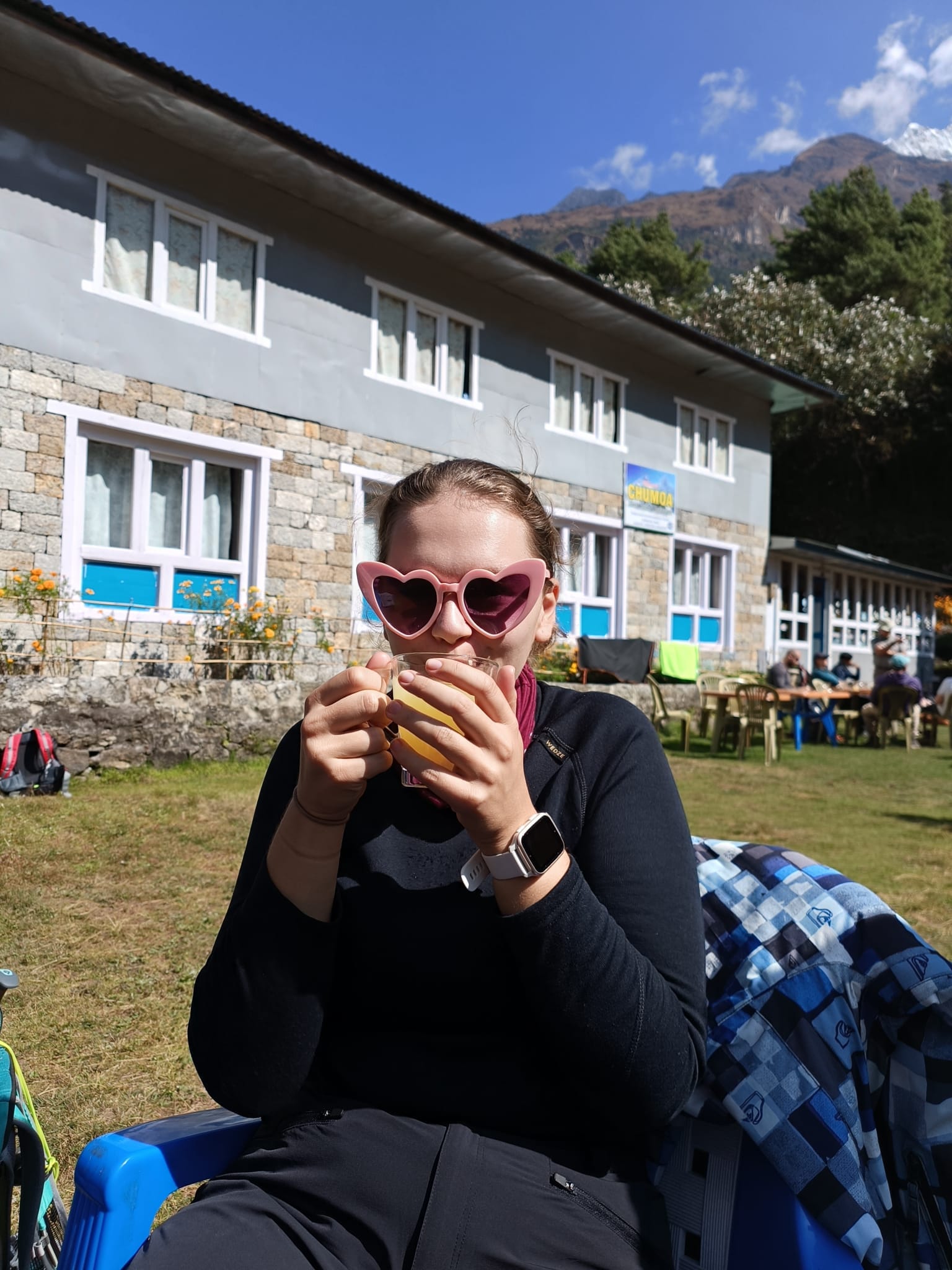
Lunch came a few hours later, further up the trail, where Bibek reminded us — with a grin — to keep drinking water. Five liters a day, he insisted, quoting both local wisdom and Google. I tried to follow his advice, which meant, of course, that I was constantly slipping off the trail for bathroom breaks. One of those was my first encounter with a Nepali toilet: a wooden shack built over a heap of hay, a hole in the middle, and the need to squat. There I was, balancing on my toes, aiming for the hole in the wooden planks a couple of meters above the ground, dangling over a cliff. Another step into a world so far from my own.
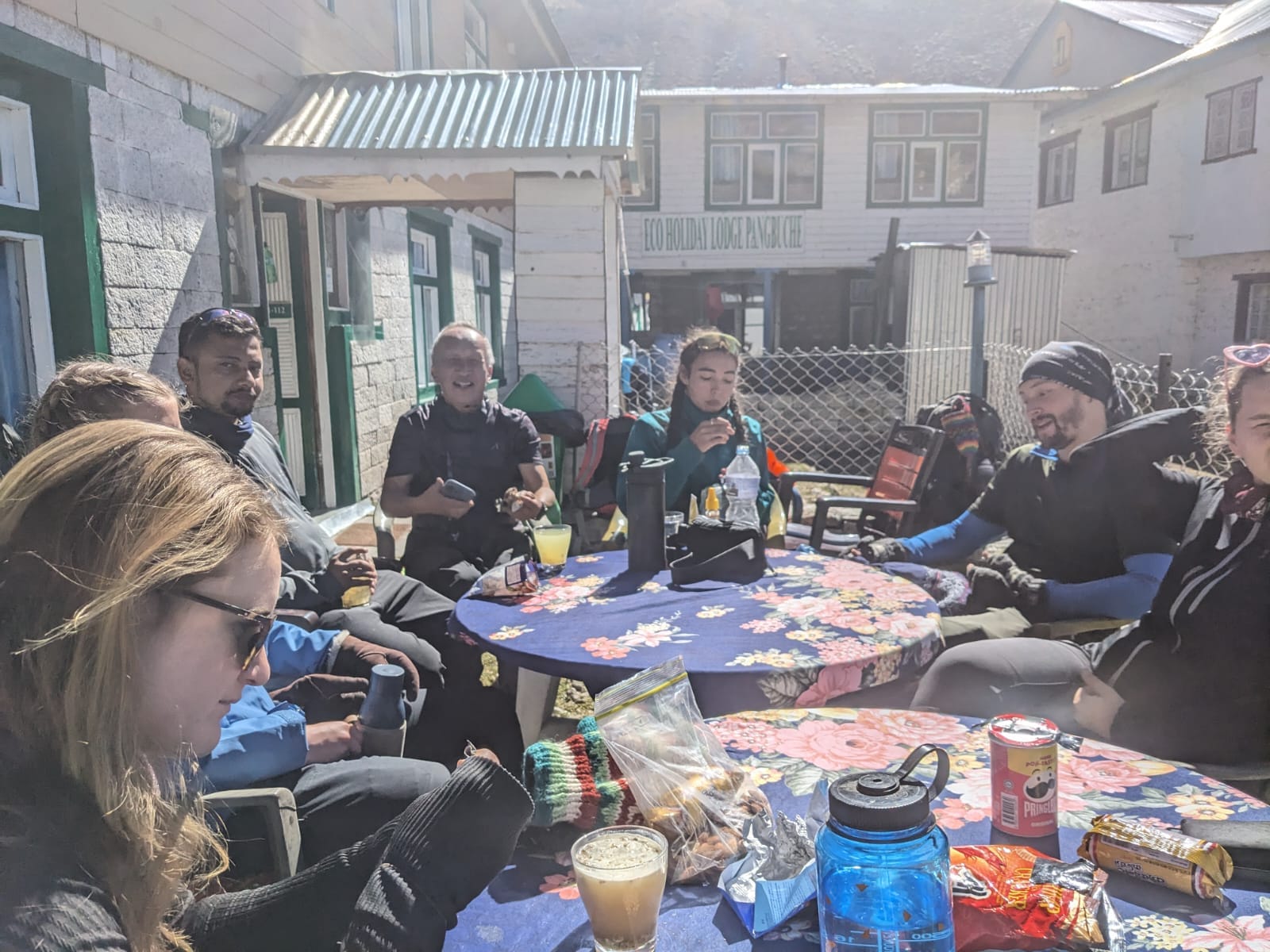
As we climbed higher, the trail grew more demanding. A landslide had torn away part of the path, forcing us to scramble over a steep and technical section. My heart pounded, partly from exertion, partly from nerves, but the mantra “slow and steady” carried me through. Each step was about finding rhythm — trusting that one careful movement after another would eventually bring me higher.
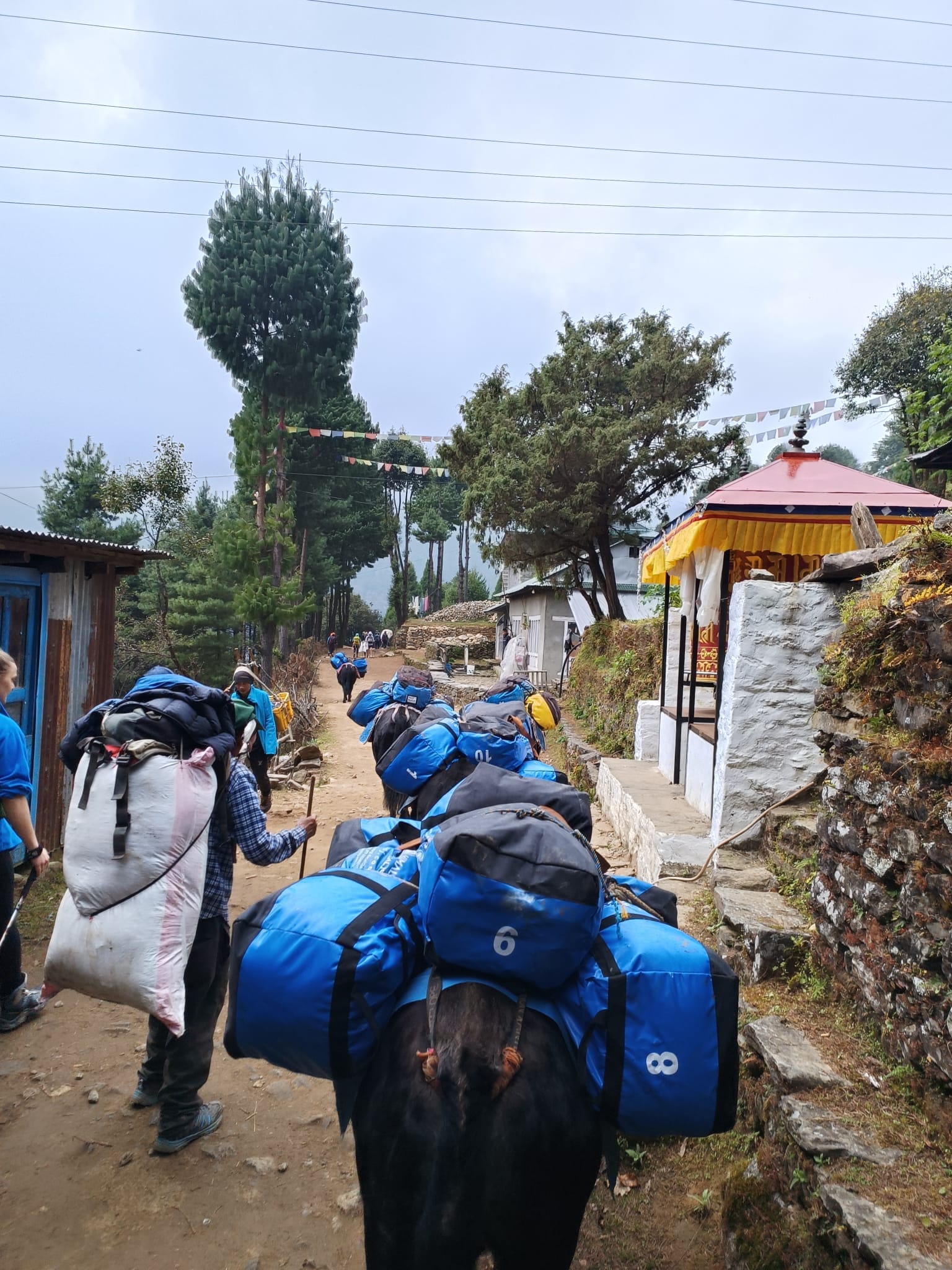
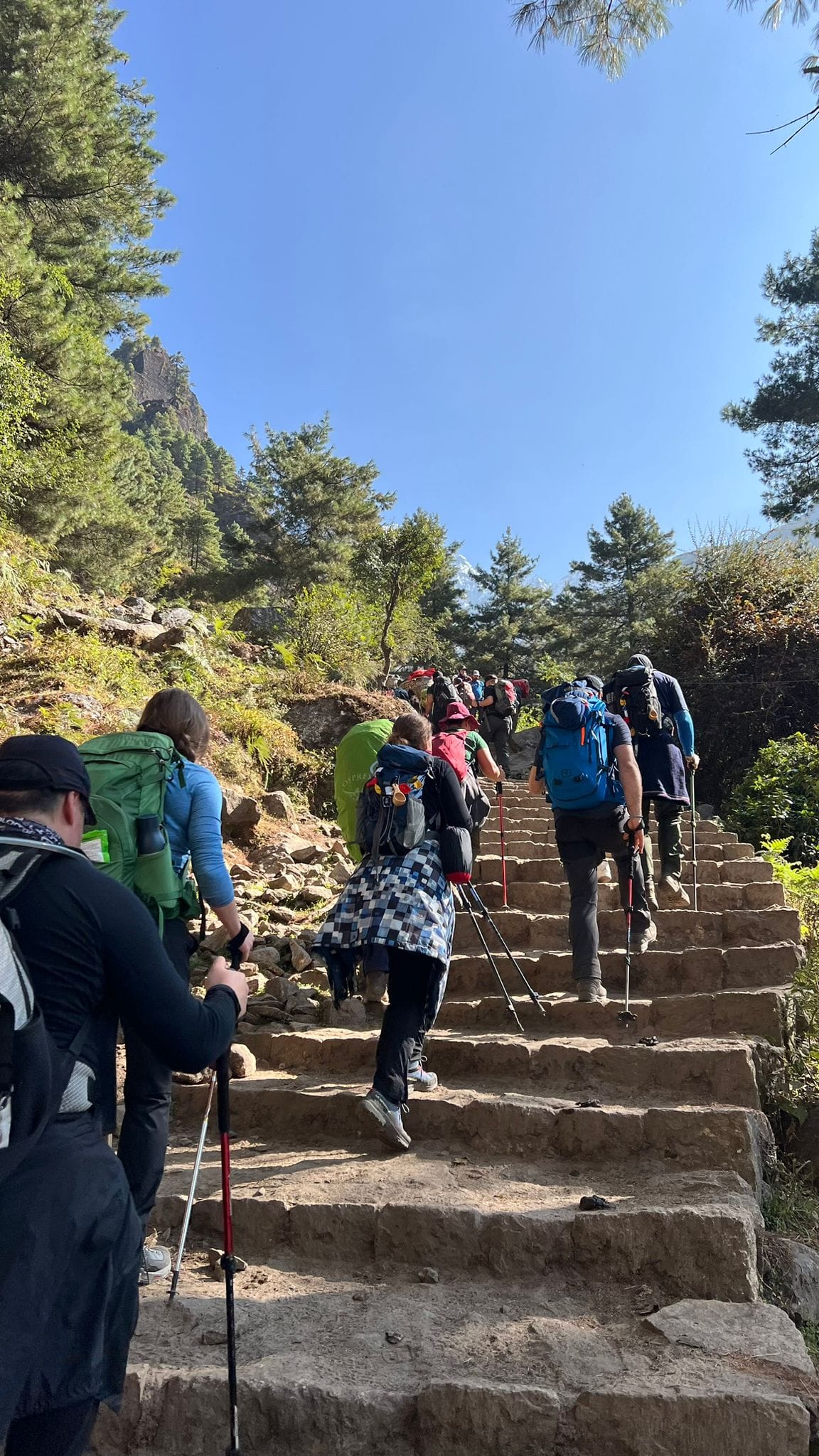
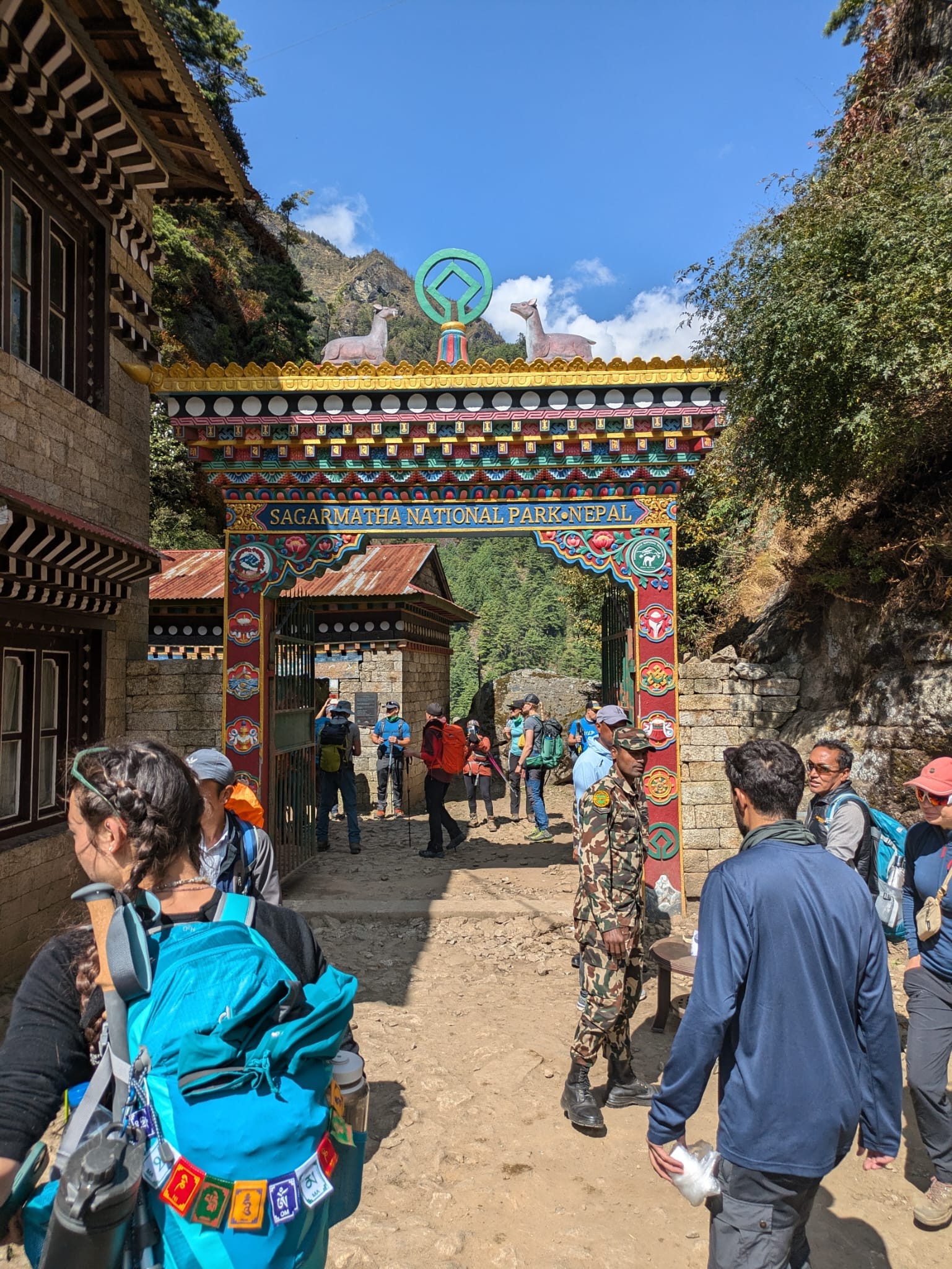
Then came the Hillary Suspension Bridge. Suspended impossibly high above the valley floor, it swayed gently in the wind as we crossed. Below us, the Milk River churned in white froth. Above us, prayer flags flapped wildly, carrying whispered prayers into the sky. The view was staggering — mountains rising like titans on all sides — but the trail beyond only grew steeper, testing our lungs and legs alike.
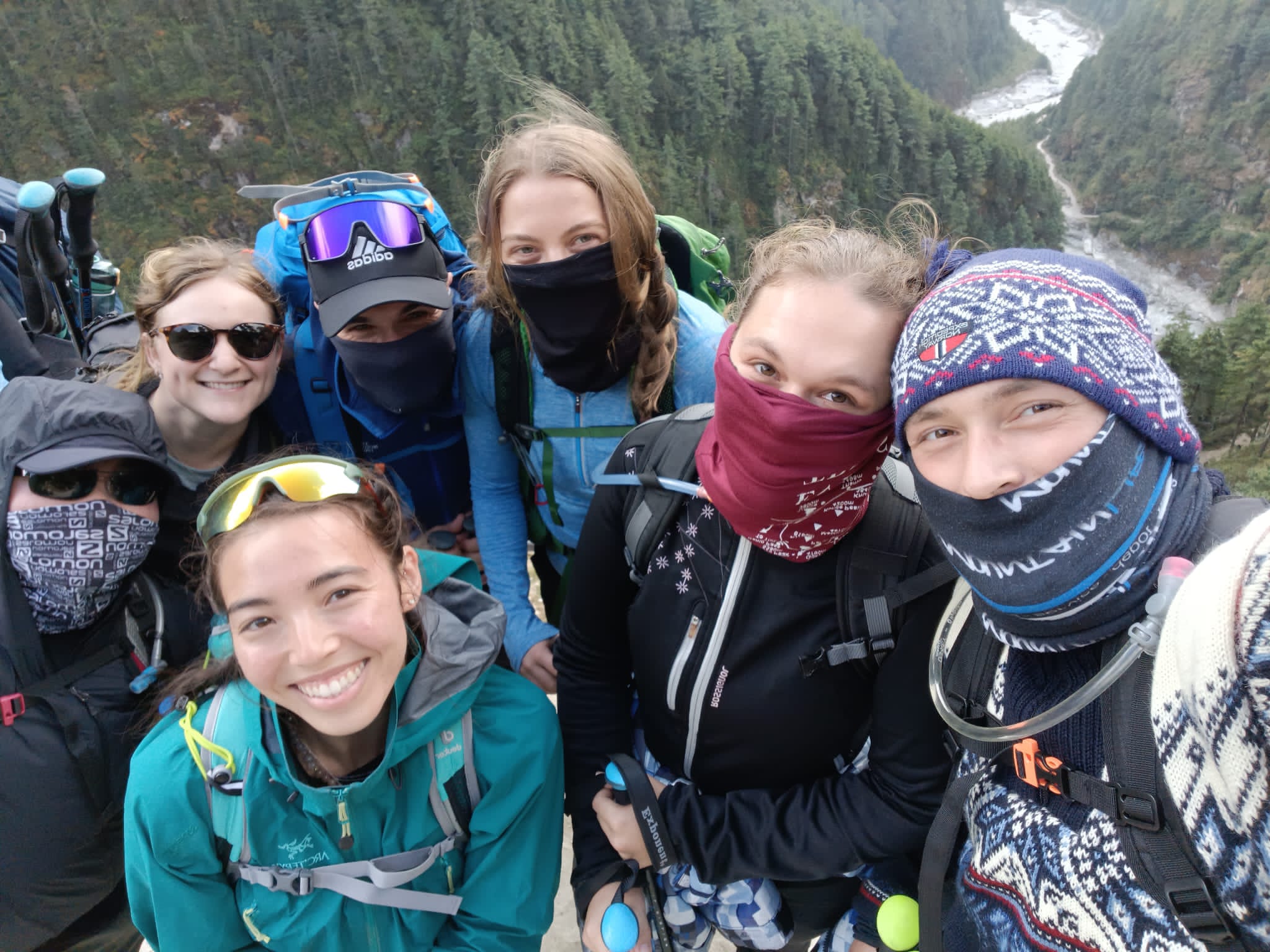
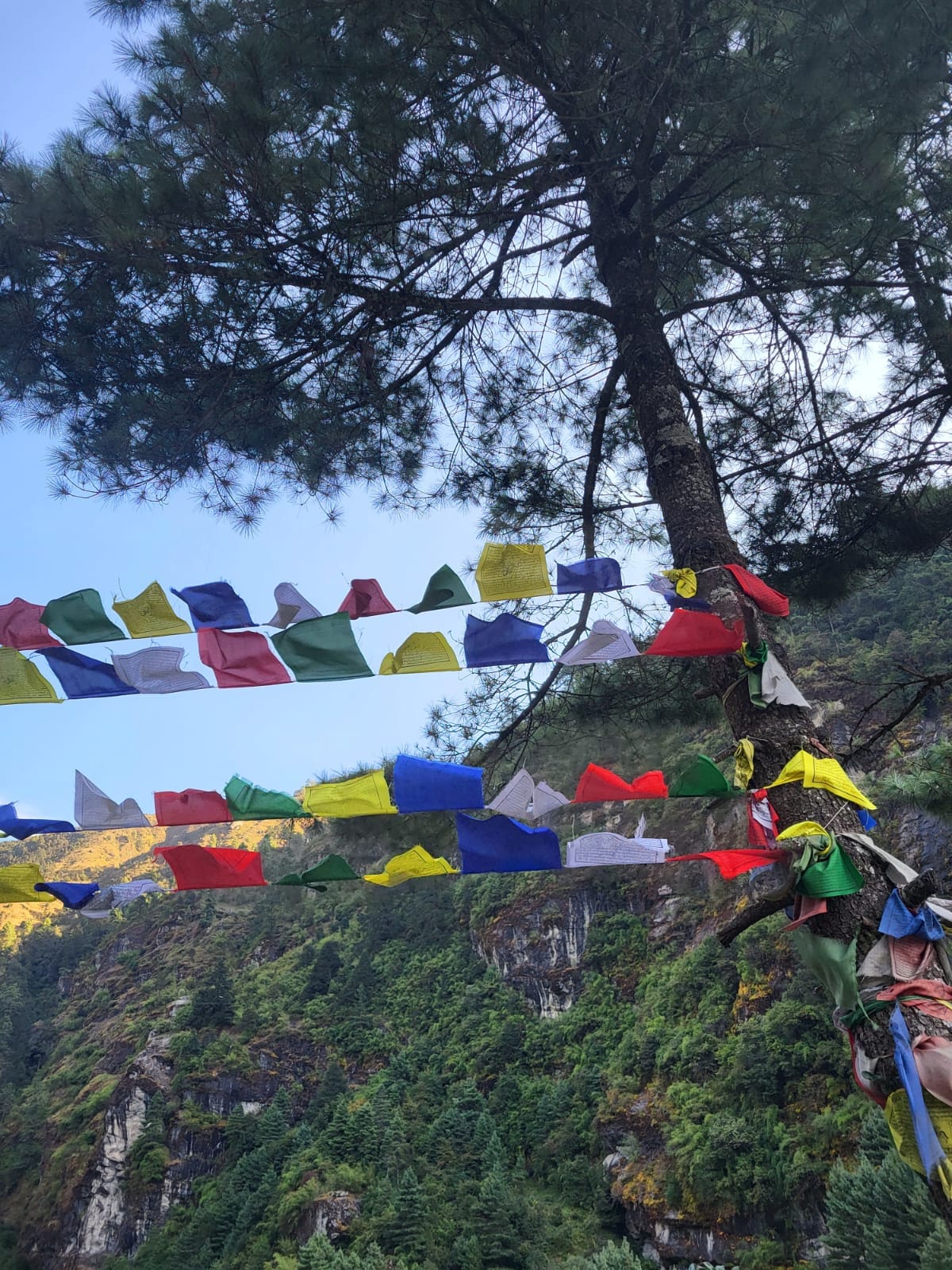
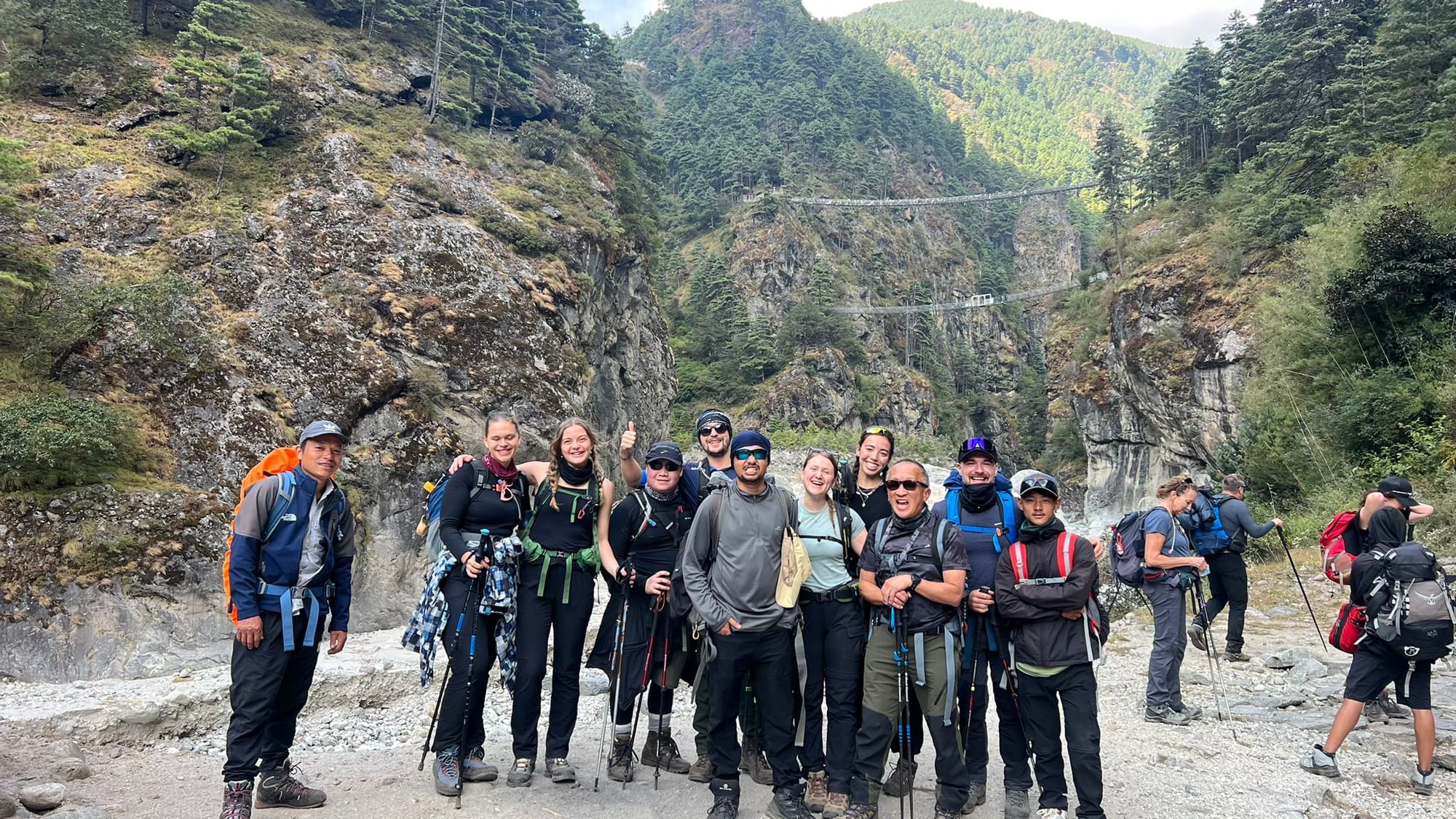
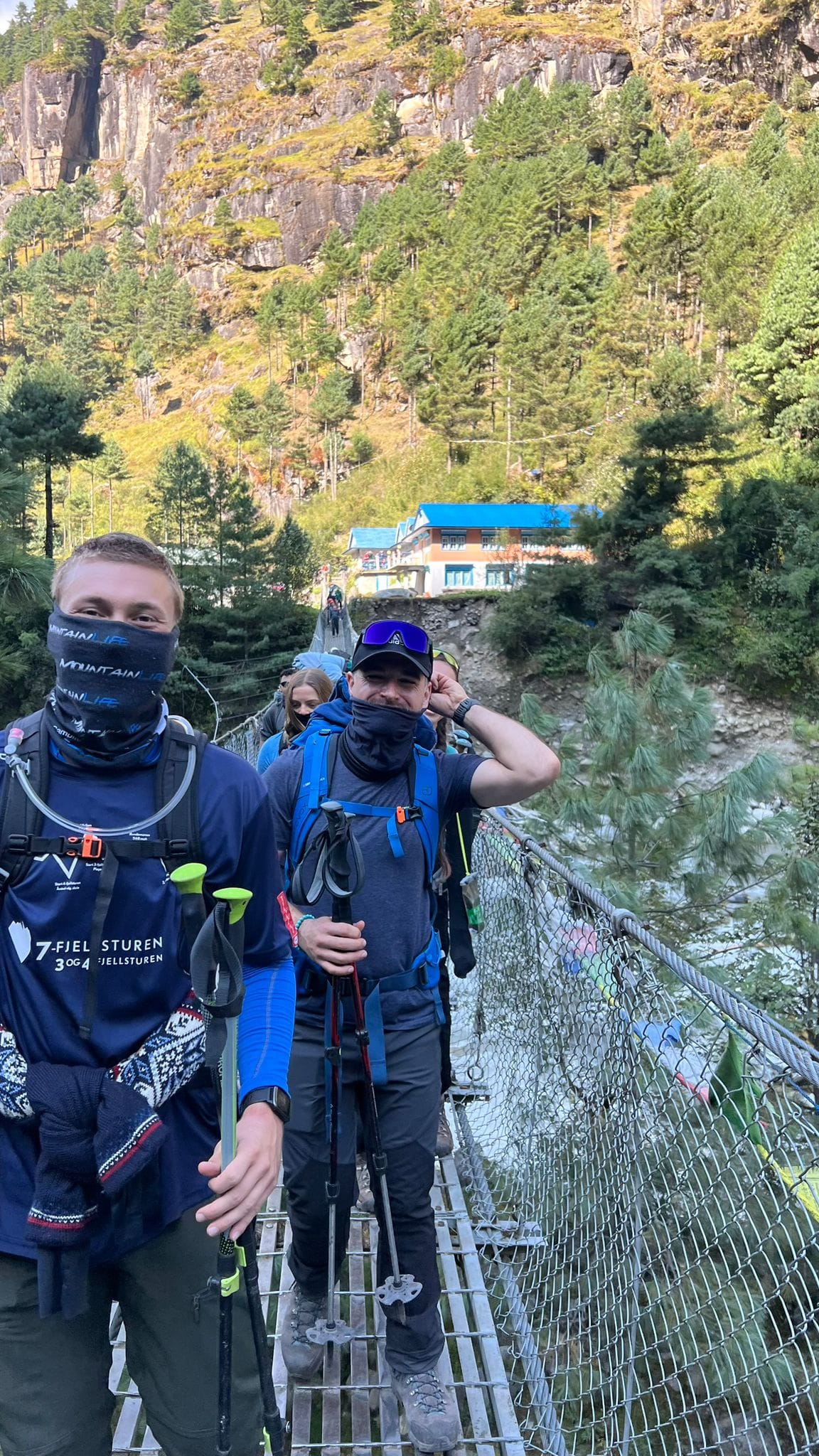
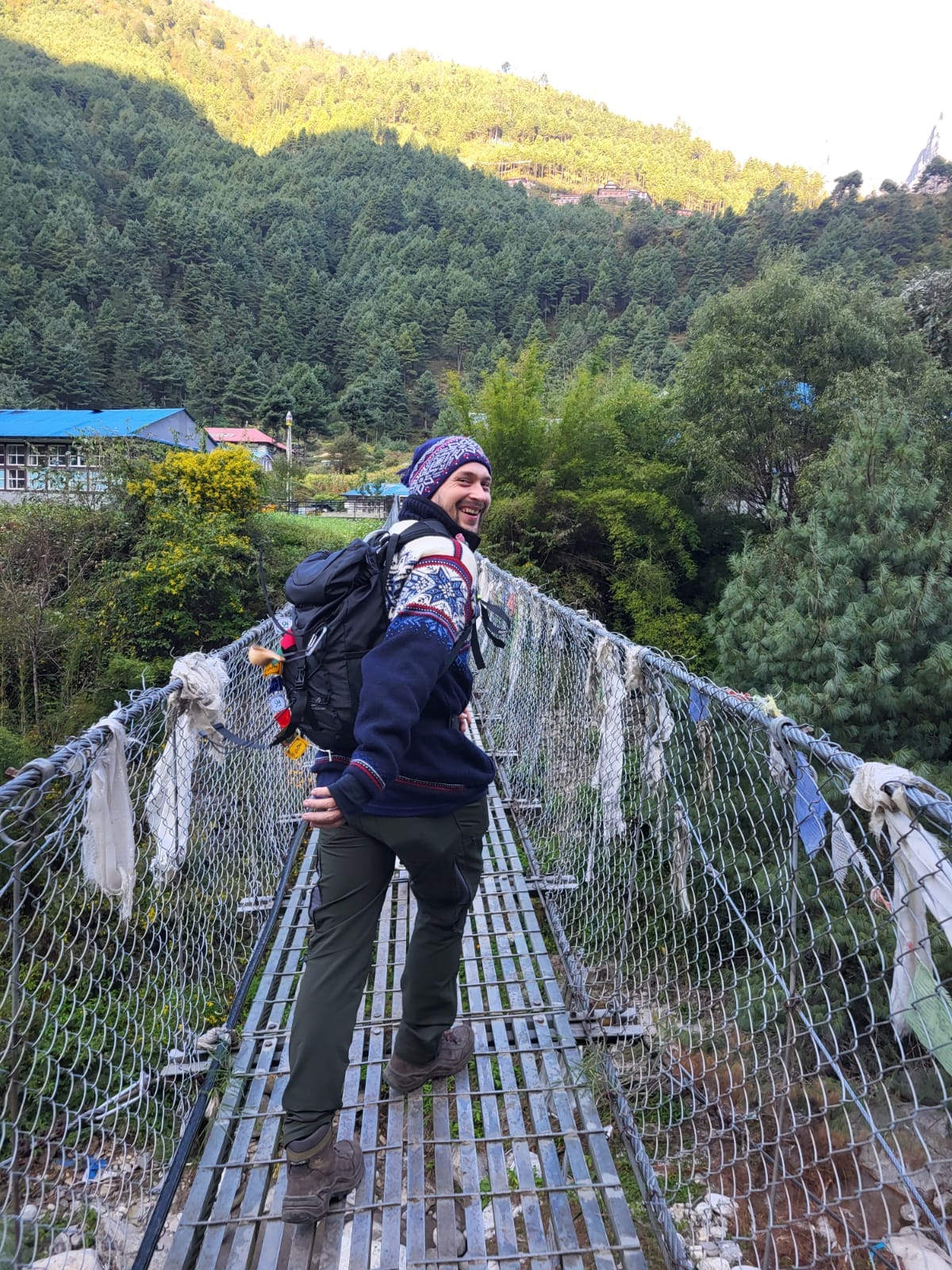
By afternoon, I could feel the altitude pressing down on my chest. Every breath came shorter, harder, as if the air had thinned into something half-imagined. Slow and steady, one step at a time, we pushed on until, finally, at 4 p.m., we reached Namché.
At the edge of the village, we rested in a teashop, savoring another round of our ginger-honey-lemon elixir. The break was short, though — it still took us another thirty minutes to weave our way into the bustling heart of Namché, where stone houses clung to the hillsides and the sound of voices carried across the valley.
By 7 p.m., I had changed into dry clothes, but even climbing a single flight of stairs in the lodge left me gasping, hands on my knees, waiting for my breath to return. That evening we played “Presidenten,” a card game that quickly crowned Christoph the “big loser” of the group — or “Arslog,” as we teased him. Dinner was a warm plate of Dal Bhat, which I devoured with joy, a true comfort food.
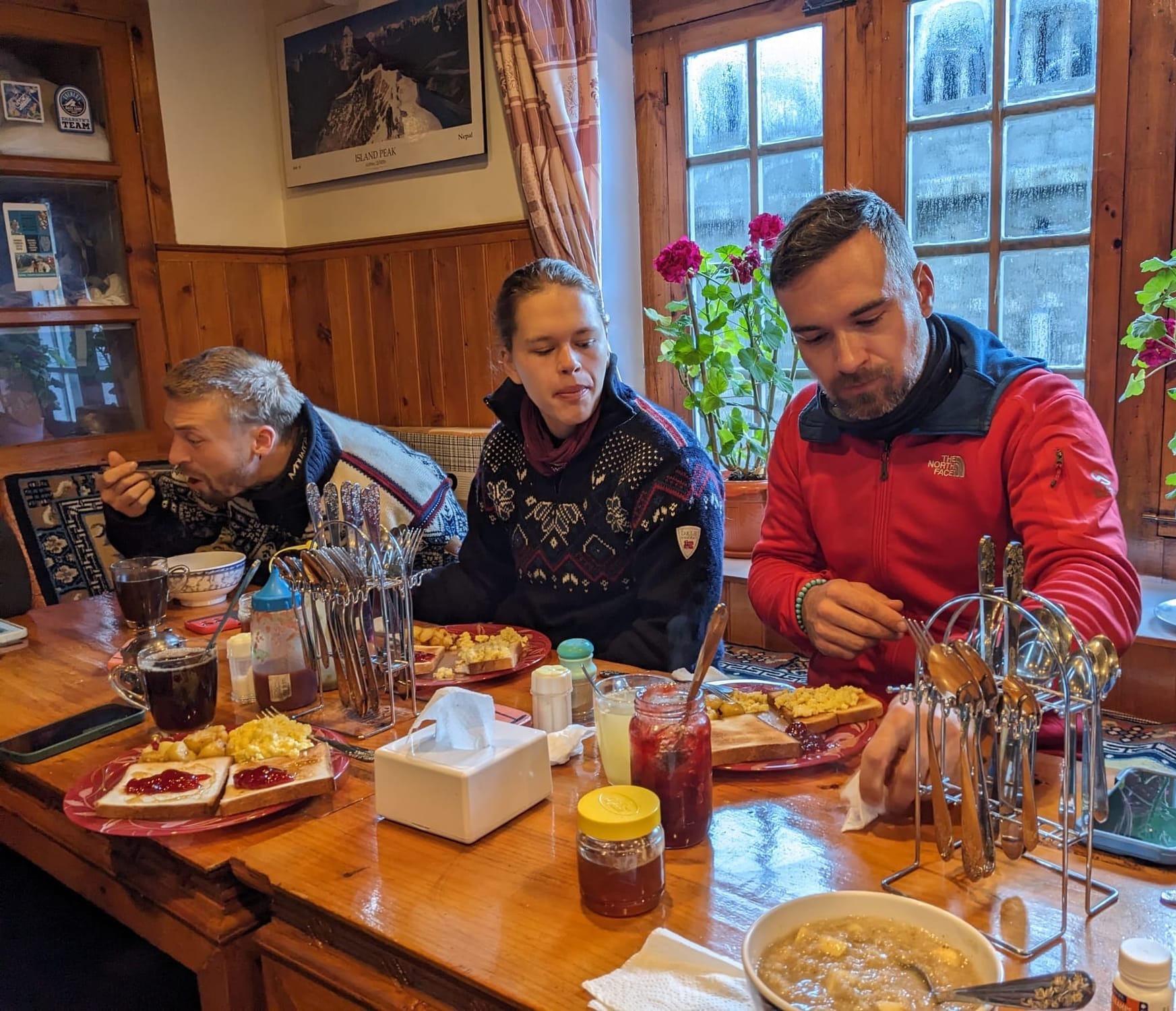
Before bed, we took our oxygen levels — another daily ritual. In the morning, mine had been 94 (normal at sea level is 98–99), but by evening, it had dropped to 85. The number set my nerves jangling, stress creeping in like shadows. But with no symptoms of altitude sickness and Bibek’s calm reassurance, I pushed the worry aside.
That night, after journaling quietly, I slipped into my sleeping bag by 9 p.m. I slept well, though every nighttime trip to the toilet felt like its own little expedition — crawling out of the warmth of the bag, braving the cold, and climbing back inside again left me out of breath and humbled by the mountain air.
It was only our first full day of trekking — and already the Himalayas were teaching me patience, rhythm, and respect.